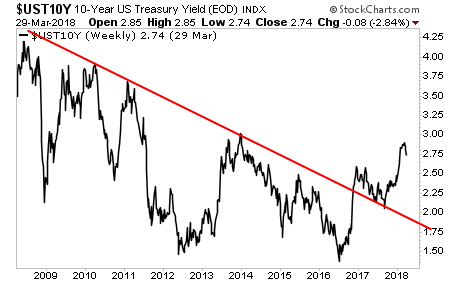Guide How to Do Expensify Quickbooks integration
To effectively track business expenses, it’s important to separate business and personal finances. Regularly record and categorize expenses by using accounting software or a dedicated app, and periodically review financial reports for accuracy. Common Challenges and How to Overcome ThemWhile Expensify QuickBooks integration offers numerous benefits, some challenges may arise.
They can review the connection setup and help you get back on track. QuickBooks, while initially challenging for newcomers, offers a wealth of features once you get the hang of it. It organizes your accounting, automatically filling in fields and categorizing transactions. Choosing the right financial software is all about user experience. You seek a tool that streamlines your workflow and boosts efficiency.
Can I install multiple QuickBooks Desktop connectors on one machine?
Some users have noted inaccuracies in currency and fuel rate updates in certain regions. These financial software strengths and weaknesses can significantly influence your experience with Expensify. Once connected, Expensify will pull your QuickBooks chart of accounts, vendors, and other key data. Before starting the integration, ensure both Expensify and QuickBooks accounts are active and set up correctly. Expensify’s QuickBooks Online integration includes different features depending on your subscription level.
While others offer bots that operate separately, Expensify gives you a true in-context assistant that makes managing expenses faster, smarter, and easier than ever. With Expensify’s Concierge AI, you don’t have to navigate complicated menus or guess where to click. Simply tell Concierge what you need, directly inside the transaction, expense report, or chat you’re already working on.
Manage my company’s expenses (1-9 employees)
We recommend waiting for the sync to complete before using either platform, as performance may be affected. These settings determine how data is imported from QuickBooks Desktop into Expensify. The following steps determine how data is exported from Expensify to QuickBooks Desktop. In Sync, with accounting details — Integrate the stage with your bookkeeping programming to take out tedious information passage when utilizing various frameworks.
- Moreover, to further check what’s causing the transactions to go directly to the bank feed in QBO, I’d recommend reaching out to Expensify support.
- The software’s expense tracking features are designed to scale with fast-growing businesses with customizable views and reports, and analytics on company spending patterns.
- Plus, data syncs automatically between the two platforms in realtime, achieving maximum efficiency gains with minimum interference.
- To effectively track business expenses, it’s important to separate business and personal finances.
When the Integration Gets Tricky: Common Challenges
The tool makes report creation and reimbursements quick and efficient, saving time and effort. When choosing between Expensify and QuickBooks, understanding their features is key. They excel in expense tracking, report generation, and receipt scanning.
Mobile App
- They can help you establish a chart of accounts to categorize your transactions, advise on best practices for recordkeeping, and make sure that you capture all relevant tax deductions.
- This Expensify QuickBooks integration guide will walk you through the benefits, setup process, and how this integration can transform your expense management.
- It helps manage both day-to-day expenses and overall financial health.
The integration capabilities with existing accounting software further enhance its appeal. It offers an all-in-one solution for handling receipts and expenses. The native Expensify-QuickBooks integration is designed to handle standard workflows. If your business processes are straightforward, and you’re primarily looking to sync expenses, automate reporting, and manage reimbursable costs, this option might be all you need.
If you have further questions about managing imported transactions in QBO or any other concerns within the program, please let us know by replying in this thread. When it comes to third-party apps, QuickBooks Online (QBO) doesn’t control how transactions are imported. Track your expenses against these predefined limits in order to identify areas where you might be over budget—and then take corrective action.
Follow these steps to configure your connection for smooth exports and accurate financial reporting. You can set up approval workflows to automatically create and submit expense reports for employees and reimburse them quickly once the reports are approved. Rather than getting bogged down in an endless pile of receipts, with a good tool, you can easily maintain organized and up-to-the-minute expense records. What’s more, you can leverage those records to perform financial analysis and find eligible tax deductions. Read on to learn the ins and outs of expense tracking and the most popular tools for managing the process.
Expensify is known for its intuitive design, making it easy to navigate and use. It also integrates with bank and credit card info, allowing you to pull receipts from statements. Every business has unique needs for managing expenses and integrating tools like Expensify and QuickBooks.
These features have earned it a 4.8 out of 5 rating from 20 user reviews, highlighting user satisfaction and positive feedback on customer service and value. QuickBooks prioritizes user security with QuickBooks security protocols. These protocols block unauthorized access to your financial records, ensuring a secure environment for managing business expenses. QuickBooks is dedicated to safeguarding your data, whether you’re online or using an application. SaaSant Transactions isn’t a replacement for Expensify or QuickBooks—it’s an enhancement. It adds capabilities where expensify quickbooks needed most, ensuring your tools work harder for your business.
Configure your out-of-pocket expenses to export to QuickBooks as checks, vendor bills, or journal entries – and company cards to export as debit cards, credit cards, or vendor bills. Expense tracking is the process of carefully documenting every single cost that is incurred by your business. This includes noting what the expense was for (e.g., office supplies or marketing), the date of the purchase, who received the money, and the exact amount spent. Doing this consistently provides a clear overview of where your money is going. Proper expense tracking allows you to monitor cash outflows and identify opportunities.
The pain of disconnected expense management
Managing expenses and financial records is a critical part of any business. With tools like Expensify and QuickBooks, businesses can streamline their financial workflows, from tracking employee expenses to reconciling data in accounting software. However, understanding the integration between Expensify and QuickBooks is essential to harness the full benefits of these platforms. This guide explains how to integrate Expensify with QuickBooks effectively and use it to save time, reduce errors, and optimize expense management.
Understanding the unique features and limitations of both Expensify and QuickBooks is crucial. This knowledge will help you make a decision that meets your business goals. This will enable the connection between QuickBooks Online and import your settings into Expensify. To use the QuickBooks Online connection, you must have a QuickBooks Online account and an Expensify Collect plan. Get started today and connect your QuickBooks and Expensify accounts in minutes.
Choose an integration solution that can scale with your needs as your business expands. It is one of the most effective applications for changing expense reports and directly submitting them for approval in QuickBooks. QuickBooks services help businesses save time and cash by eliminating all the manual accounting work, increasing accuracy, and reducing fraud risk. This is a comprehensive guideline on the way for Expensify QuickBooks Integration. Expensify is a top choice for many small businesses due to its user-friendly interface and automated features.





